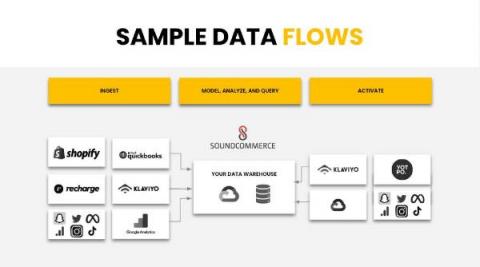Systems | Development | Analytics | API | Testing
BI
How to Become a Data Economy Leader: The Rise of the CDO (Chief Data Officer)
The catalyst of innovation and transformation is data. The companies that recognize the power of data and wield it to drive business transformation are seeing positive impacts on their business outcomes, as indicated in our report, How to Win in the Data Economy. We surveyed 1,000 senior business and technology executives to gauge the impact the data industry is having on their businesses, and to what extent companies are embracing the opportunity to become data leaders.
Defending your customer's data - René Waslo
Improve Underwriting Using Data and Analytics
Insurance carriers are always looking to improve operational efficiency. We’ve previously highlighted opportunities to improve digital claims processing with data and AI. In this post, I’ll explore opportunities to enhance risk assessment and underwriting, especially in personal lines and small and medium-sized enterprises.
What's new in ThoughtSpot Analytics Cloud 8.7.0
The Fascinating History of Data Visualization
Built with BigQuery: Retailers drive profitable growth with SoundCommerce
As economic conditions change, retail brands’ reliance on ever-growing customer demand puts these companies at financial and even existential risk. Top-line revenue and active customer growth do not equal profitable growth.
Data Vault Techniques on Snowflake: Streams and Tasks on Views
Snowflake removes the need to perform maintenance tasks on your data platform and provides you with the freedom to choose your data model methodology for the cloud. When attempting to keep the cost of data processing low, both data volume and velocity can make things challenging.
SCIM (System for Cross-domain Identity Management)
The identity team at Cloudera has been working to add the System for Cross-domain Identity Management (SCIM) support to Cloudera Data Platform (CDP) and we’re happy to announce the general availability of SCIM on Azure Active Directory! In Part One we discussed: CDP SCIM Support for Active Directory, which discusses the core elements of CDP’s SCIM support for Azure AD.
DataOps Observability Designed for Data Teams
Today every company is a data company. And even with all the great new data systems and technologies, it’s people—data teams—who unlock the power of data to drive business value. But today’s data teams are getting bogged down. They’re struggling to keep pace with the increased volume, velocity, variety, complexity—and cost—of the modern data stack. That’s where Unravel DataOps observability comes in.










